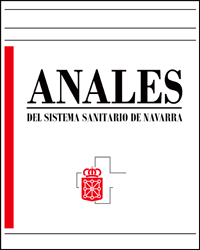Parity implications for anthropometrical variables, lifestyle behaviors and dietary habits in pregnant women
##plugins.pubIds.doi.readerDisplayName##:
https://doi.org/10.23938/ASSN.0321Gako-hitzak:
Pregnancy. Parity. Nutritional status. Lifestyle behaviours. Food habits.Laburpena
Background. Maintaining an adequate health status and appropriate lifestyles during pregnancy is of great importance to prevent adverse outcomes for both mother and baby. The present study aimed to assess the nutritional status, socio-demographic features, lifestyle behaviors and dietary habits of pregnant women in Spain, and to identify the influence of parity on these profiles.
Methods. This cross-sectional study included pregnant women from regions all over Spain. The information was collected through a 40 item questionnaire, previously validated by community health professionals.
Results. The 5,087 pregnant women analyzed had an average age of 31.9 years with an adequate nutritional status. The distribution of the sample was 56% nulliparous and 44% multiparous. The nulliparous reported a better self-perceived health status and nutritional balance, and a lower incidence of gestational diabetes mellitus. However, the multiparous showed healthier lifestyle habits (lower rates of smoking and alcohol consumption) and more physically active patterns. Regarding diet, nulliparous pregnant women consumed more dairy products, fresh fruit and nuts, and less bread, rice/pasta/potatoes, meat, sausage and buns/pastries than multiparous pregnant women.
Conclusions. Differences between analyzed patterns were observed in anthropometrical variables, lifestyle behaviors and dietary habits, which may require different nutritional messages to nulliparous as compared to multiparous from a public health point of view.
##plugins.generic.usageStats.downloads##
##submission.downloads##
Argitaratuta
##submission.howToCite##
Zenbakia
Atala
##submission.license##
##submission.license.cc.by-sa4.footer##La revista Anales del Sistema Sanitario de Navarra es publicada por el Departamento de Salud del Gobierno de Navarra (España), quien conserva los derechos patrimoniales (copyright ) sobre el artículo publicado y favorece y permite la difusión del mismo bajo licencia Creative Commons Reconocimiento-CompartirIgual 4.0 Internacional (CC BY-SA 4.0). Esta licencia permite copiar, usar, difundir, transmitir y exponer públicamente el artículo, siempre que siempre que se cite la autoría y la publicación inicial en Anales del Sistema Sanitario de Navarra, y se distinga la existencia de esta licencia de uso.








